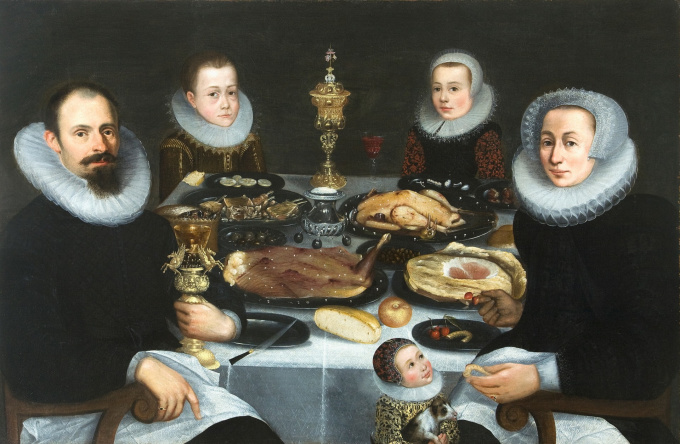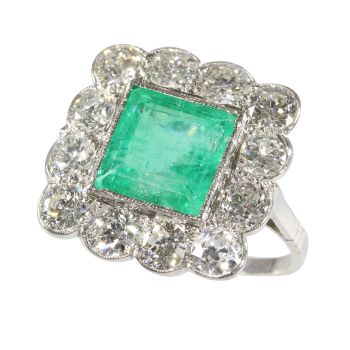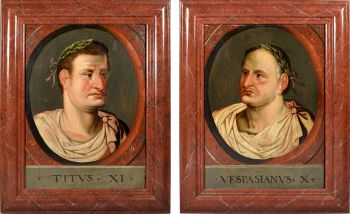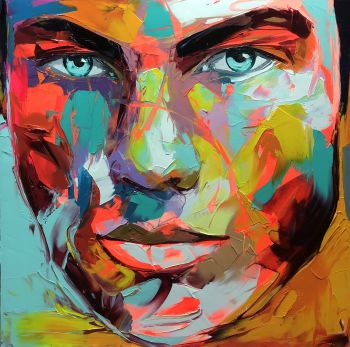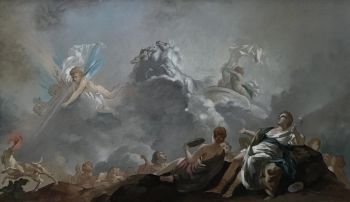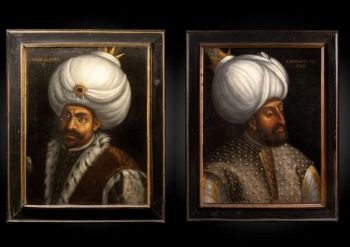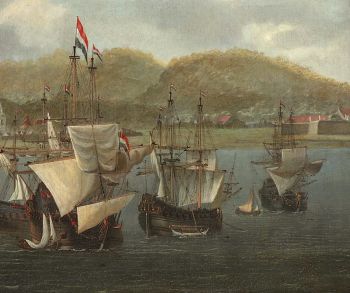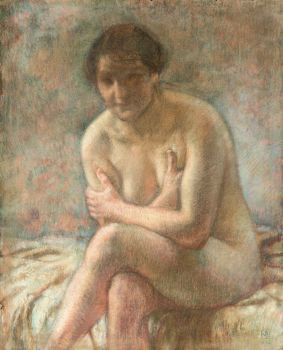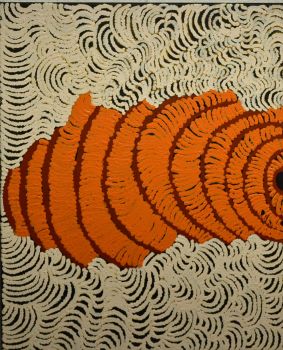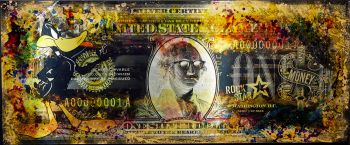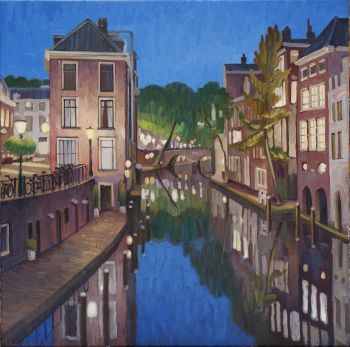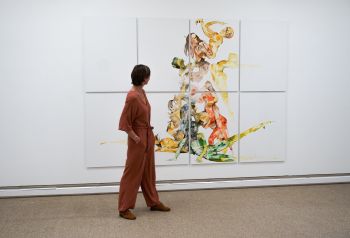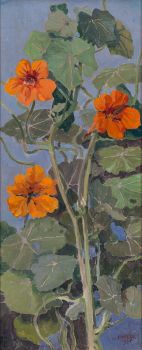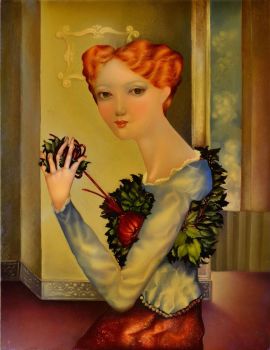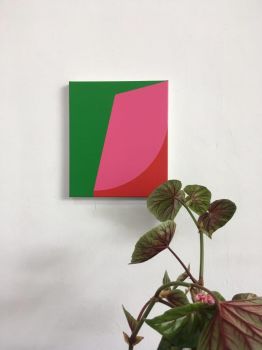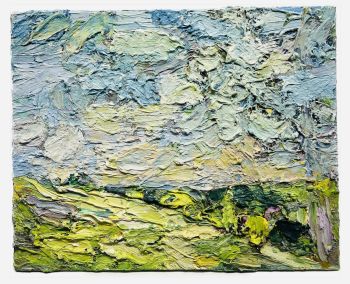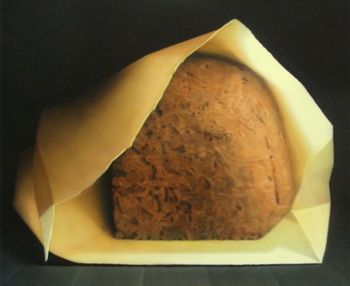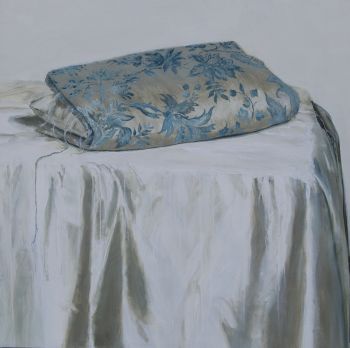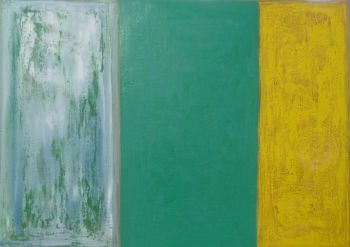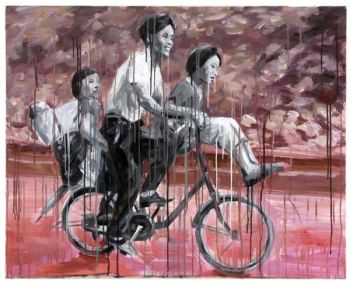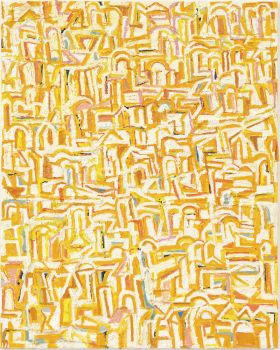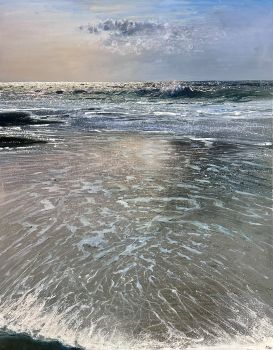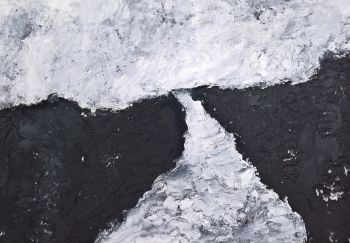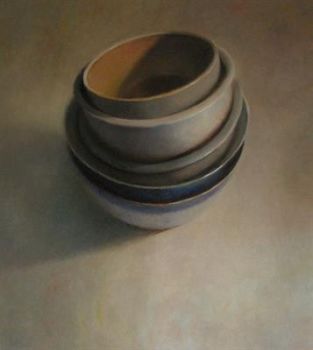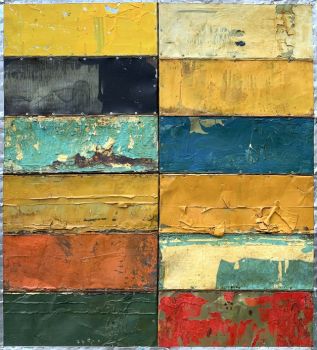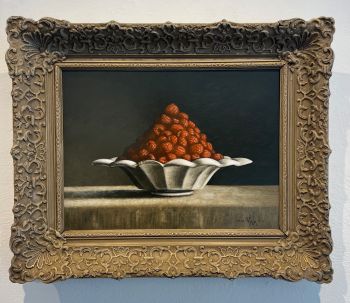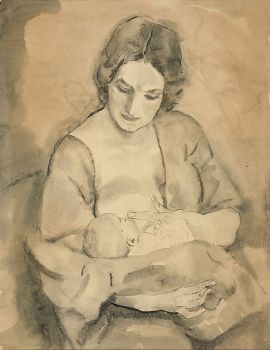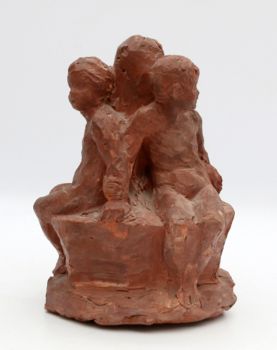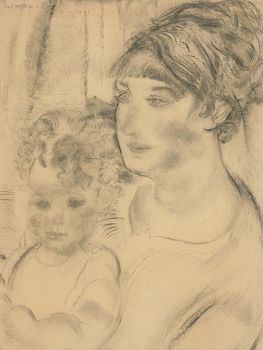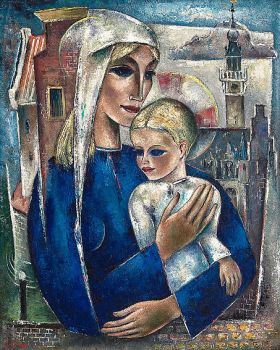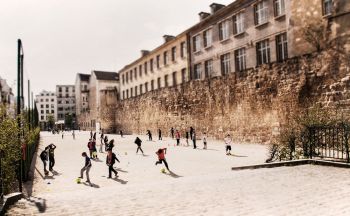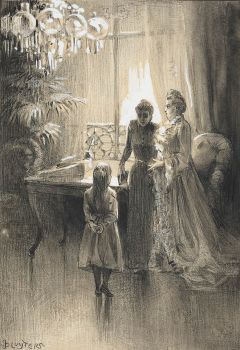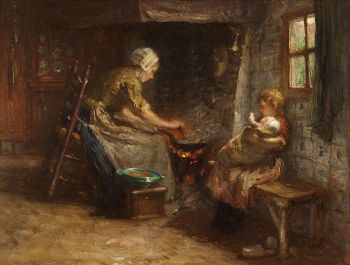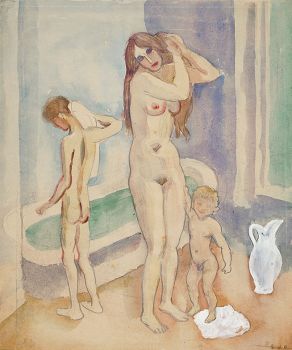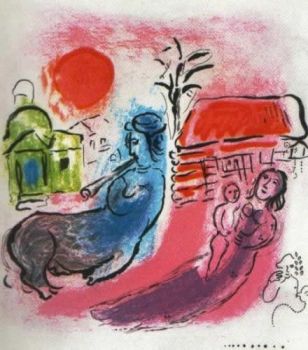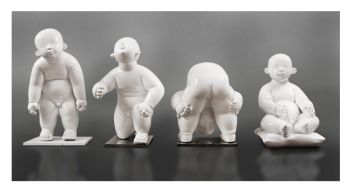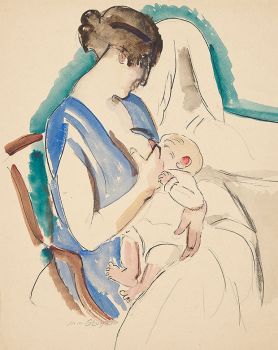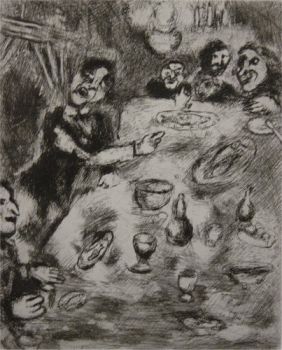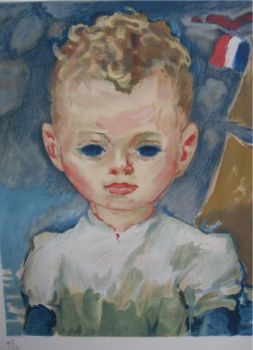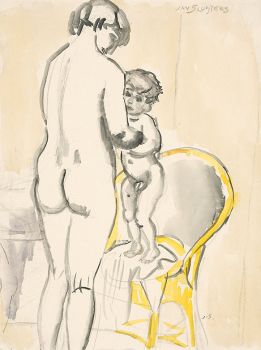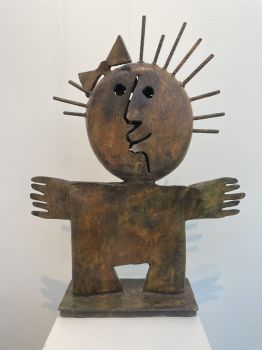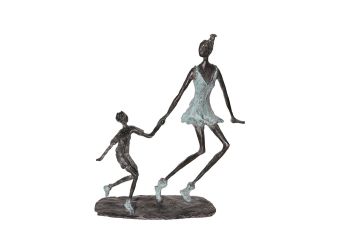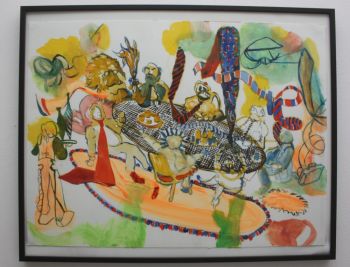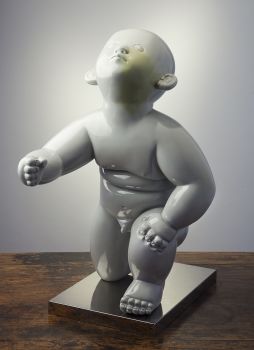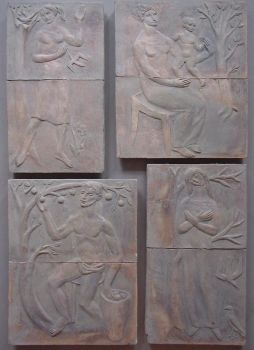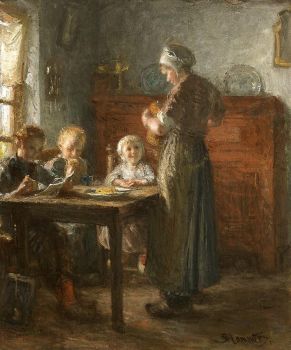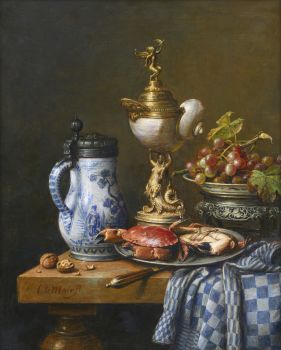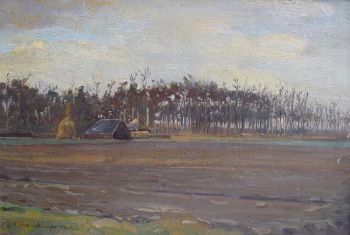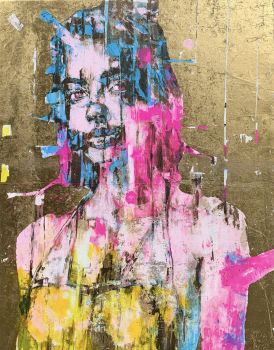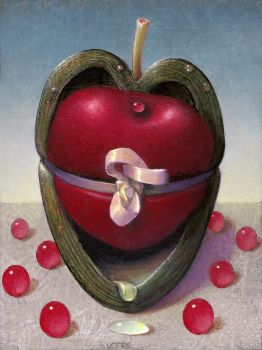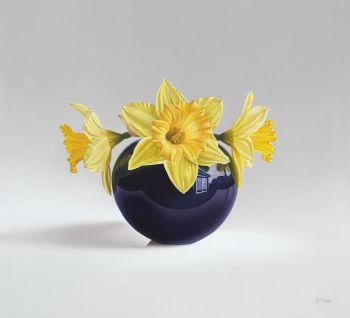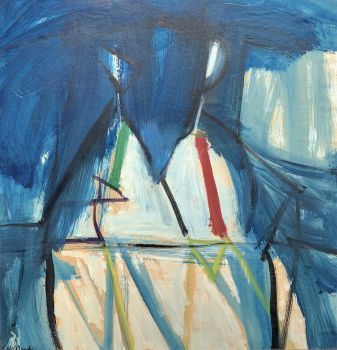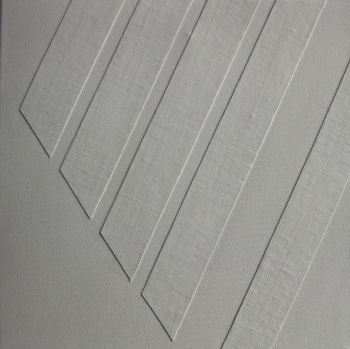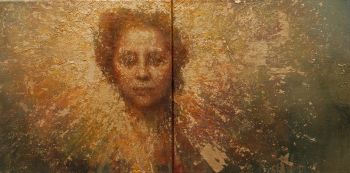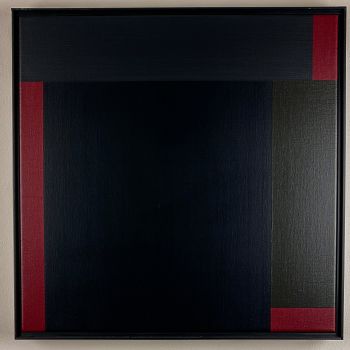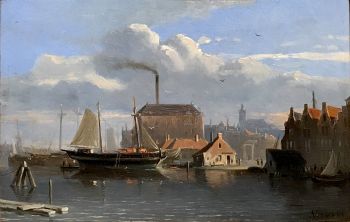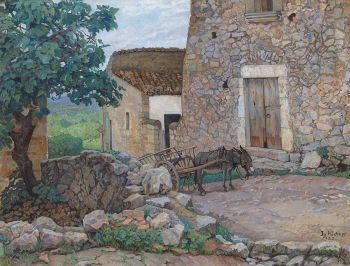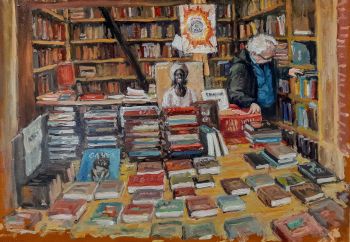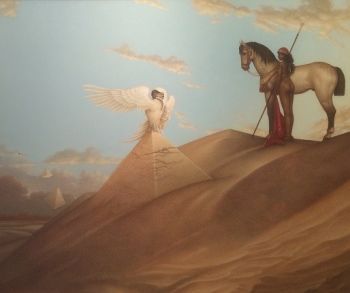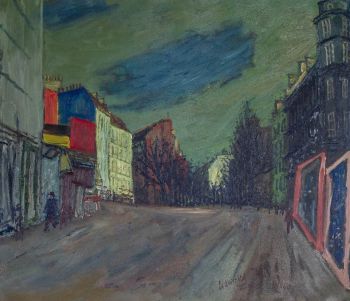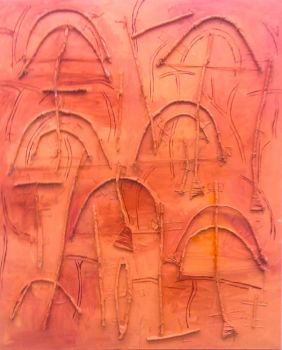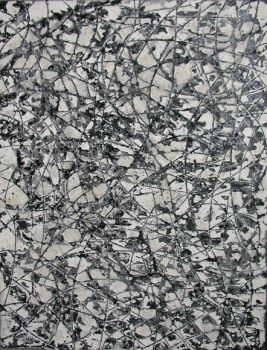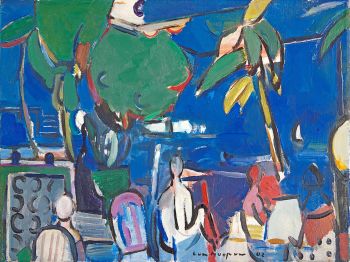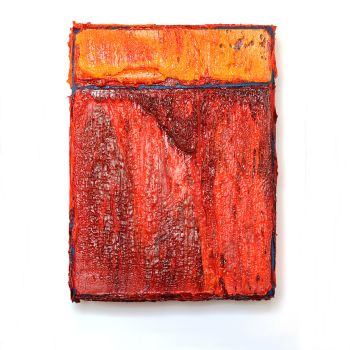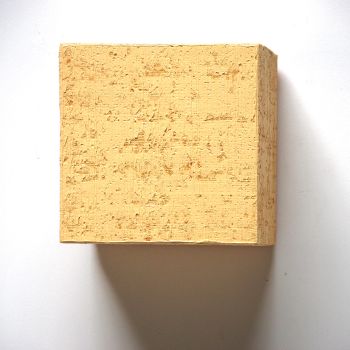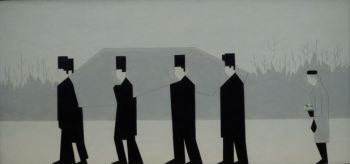Portrait of a Patrician family 1610
Artiste Inconnu
Peinture à l'huilePeindre
101 ⨯ 152 cm
Actuellement indisponible via Gallerease
- Sur l'oeuvre d'artPORTRAIT OF A PATRICIAN FAMILY
with an unidentified monogram/coat of arms and star on the blade of the knife | circa 1610 | oil on canvas | 152 x 101 cm
Provenance: Dutch private collection by descent
This portrait of a patrician family, seated around the table, is a rare and important piece within the art history of the early 17th century. It can be dated circa 1610, on the basis of its stylistic features and the presented objects. Only a few family portraits, with the family members gathered around a table, are known from the first quarter of the seventeenth century. This painting has been in the possession of a distinguished Dutch family for centuries.
The family portrait shows a wealthy family, who are seated at a lavishly set table. The husband and wife are seated at the most prominent places of the painting, according to traditional conventions. The father, as head of the family, confidently raises his berkemeier, a typical glass, which is mounted on a so –called bekerschroef. His wife is holding two cherries and a broken krakeling. Even though the children take in a central place in the painting, there is a hierarchy within the family. It was rather unusual for children to be seated at the table. They were expected to remain standing, as depicted here. Furthermore, from a hierarchical point of view, the boy was painted next to his father and the girl next to her mother.
The rich clothing, abundance of food and the precious objects that were placed on the table are means to impress the beholder. The exotic fruits, sweat meat, olives and salt were costly products, imported from distant countries. The silverware and delicate glasses are likely to have been part of the family estate. The silver salt cellar in this painting is very exceptional. It occurs in paintings by Osias Beert (1580-1624) and Clara Peeters (1594-1657), but has not been found in literature on antique silver yet. The clothing, with
fine lacework and gilt-thread embroidery conveys the message of wealth and abundance.
The painter managed to capture this special moment for posterity and this portrait was without doubt the show piece of the family. - Sur l'artiste
Il peut arriver qu'un artiste ou un créateur soit inconnu.
Certaines œuvres ne doivent pas être déterminées par qui elles sont faites ou elles sont faites par (un groupe d') artisans. Les exemples sont des statues de l'Antiquité, des meubles, des miroirs ou des signatures qui ne sont pas claires ou lisibles, mais aussi certaines œuvres ne sont pas signées du tout.
Vous pouvez également trouver la description suivante :
•"Attribué à …." A leur avis probablement une oeuvre de l'artiste, au moins en partie
•« Atelier de …. ou « Atelier de » À leur avis, une œuvre exécutée dans l'atelier ou l'atelier de l'artiste, éventuellement sous sa direction
•« Cercle de… ». A leur avis une oeuvre de la période de l'artiste témoignant de son influence, étroitement associée à l'artiste mais pas forcément son élève
•« Style de … ». ou "Suiveur de ...." Selon eux, une œuvre exécutée dans le style de l'artiste mais pas nécessairement par un élève ; peut être contemporain ou presque contemporain
•« Manière de… ». A leur avis une oeuvre dans le style de l'artiste mais d'une date plus tardive
•"Après …." A leur avis une copie (quelle qu'en soit la date) d'une oeuvre de l'artiste
•« Signé… », « Daté… ». ou « Inscrit » À leur avis, l'œuvre a été signée/datée/inscrite par l'artiste. L'ajout d'un point d'interrogation indique un élément de doute
• "Avec signature ….", "Avec date ….", "Avec inscription …." ou "Porte signature/date/inscription" à leur avis la signature/date/inscription a été ajoutée par quelqu'un d'autre que l'artiste
Artwork details
Related artworks
- 1 - 4 / 12
Artiste Inconnu
Een Gotische zuidelijke Nederlanden wandklok1580 - 1590
Prix sur demandeNico van den Assem restauratie
 Sélectionné par
Sélectionné parDanny Bree
Artiste Inconnu
Verre à boire Cristallo façon de Venise1600 - 1650
Prix sur demandePeter Korf de Gidts - Antiquairs
1 - 4 / 24- 1 - 4 / 24
 Sélectionné par
Sélectionné parGallerease Magazine
Bernardus Johannes Blommers
Het bereiden van de maaltijd1870 - 1914
Prix sur demandeStudio 2000 Art Gallery
1 - 4 / 24- 1 - 4 / 24

